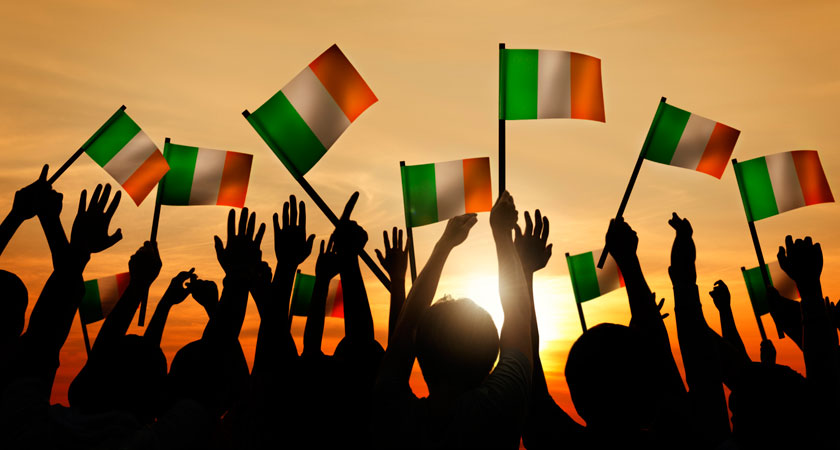THE GREEN, white and orange (not gold!) of the Tricolour have become synonymous with Ireland since 1916’s Easter Rising.
But how much do you really know about the Irish flag and its history?
We’ve put together 11 facts about Bratach na hÉireann and why it’s still so relevant today…
1. Not our first
Before the tricolour, Irish nationalists flew a green flag with a harp on it. This older flag was first flown by Irish rebel leader Owen Roe O'Neill in 1642.
2. Foreign inspiration
The flag was inspired by both the tricolours of France, with blue, white and red, and Newfoundland in Canada, with green, white and pink.
3. First flown
The tricolour was first flown publicly by Thomas Francis Meagher, leader of the Young Irelanders, in Waterford city on March 7, 1848.
4. Emblem of peace
With green representing republican Catholicism, and orange representing loyalist Anglicanism, the goal of the flag was to make peace and promote unity between the two traditions.
5. White balance
On April 15, 1848, Meagher presented the flag to the citizens of Dublin, and said: “The white in the centre signifies a lasting truce between the orange and the green.”
6. Orange, not gold
Sometimes, the orange third of the banner is identified as being gold or a shade of yellow. However, the Department of the Taoiseach state that this is a misrepresentation of its meaning which "should be actively discouraged", and that worn-out flags should be replaced.
7. A future foretold
Meagher was convicted by the British after leading a failed rebellion in July 1848. Before his trial, he told a huge crowd at Slievenamon in Co. Tipperary that future generations would one day see the tricolour flown proudly across Ireland.
8. Rules of the flag
There are a number of official rules regarding the flag, the main one being that no other flag should be flown above it. Another is that the green side of the flag must always be closest to the mast/hoist.
9. Ireland’s symbol
The tricolour became synonymous with Irish national identity after the Easter Rising in Dublin, when the the Irish Republican Brotherhood, Irish Volunteers and Irish Citizen Army flew the banner above the GPO building in Dublin on Easter Monday, April 21, 1916.
10. March 17 emblem
The flag has achieved iconic status around the world in the last century thanks to its use at St Patrick’s Day parades from London to Chicago.
11. Continued relevance
With its colours representing peace and unity between Catholics and Protestants, Bratach na hÉireann is as poignant and relevant a symbol today as it's ever been.










